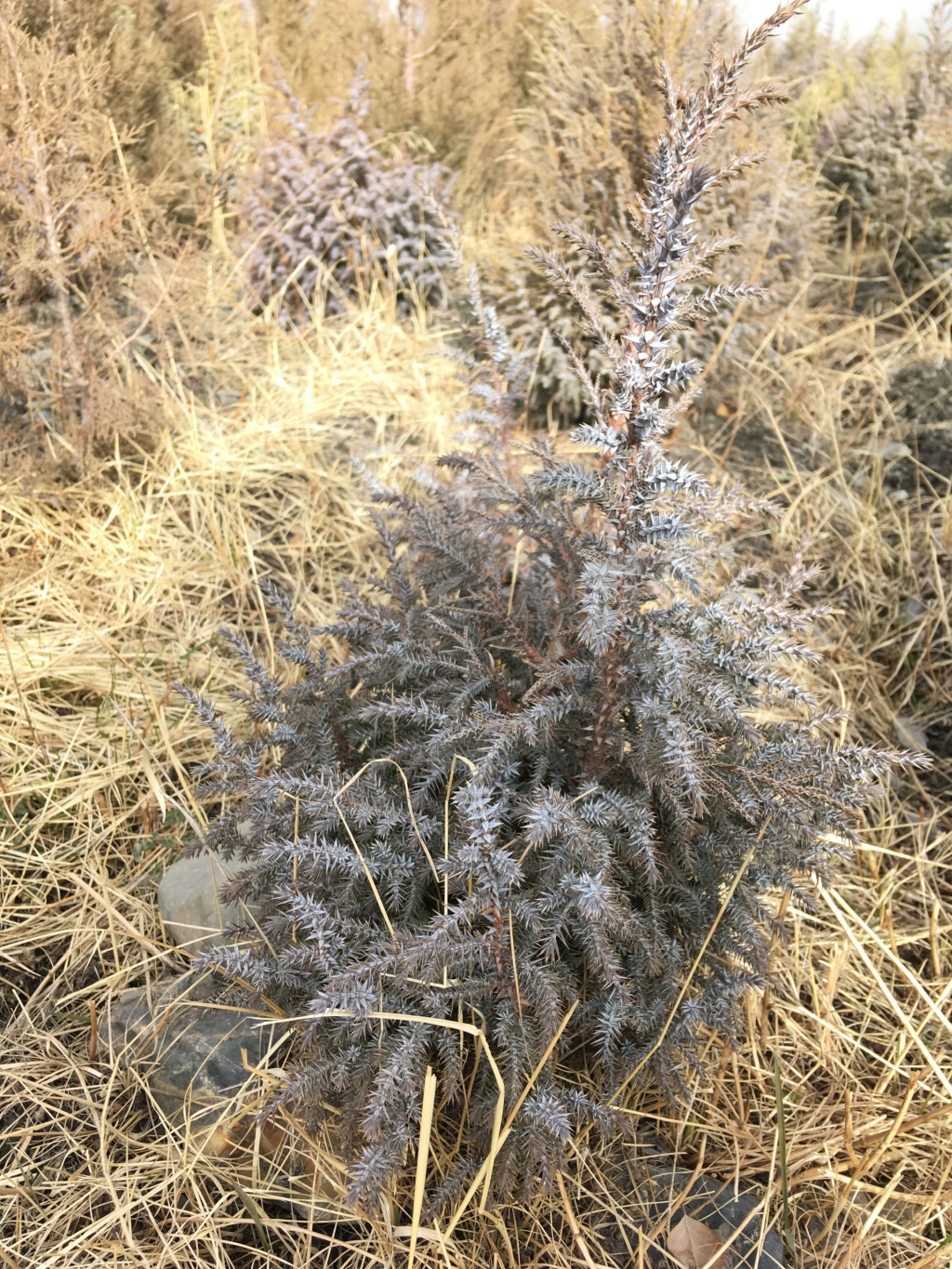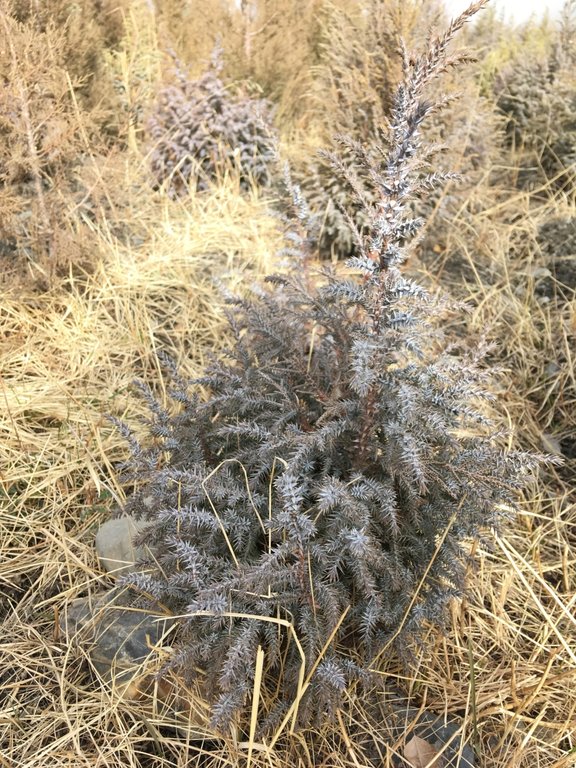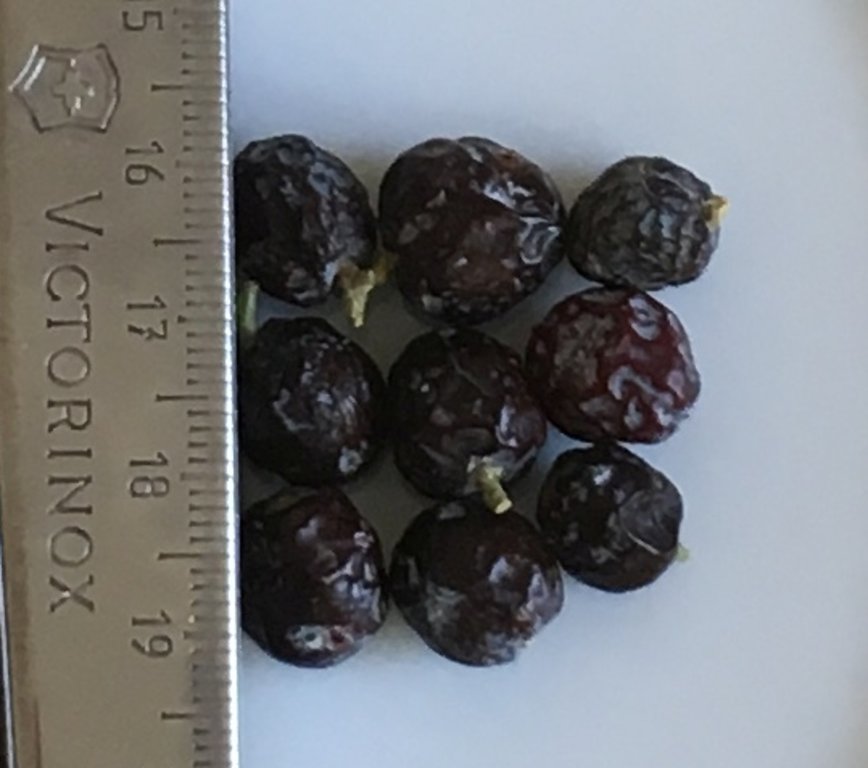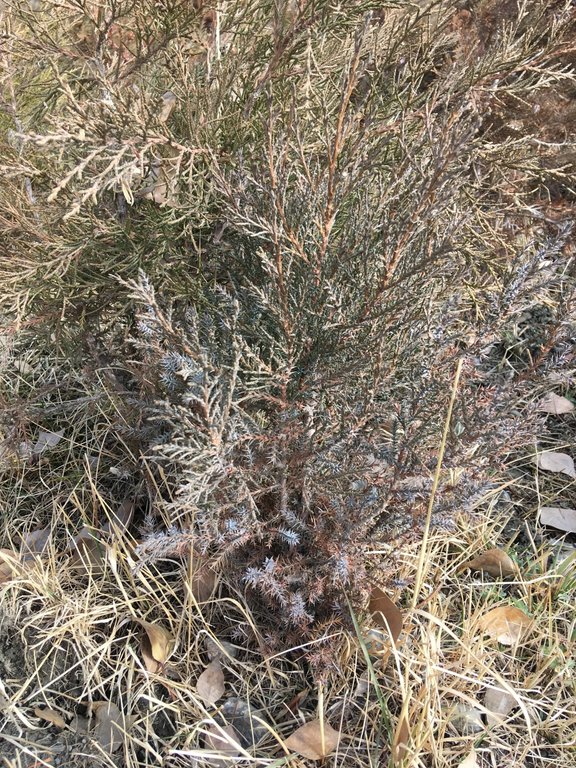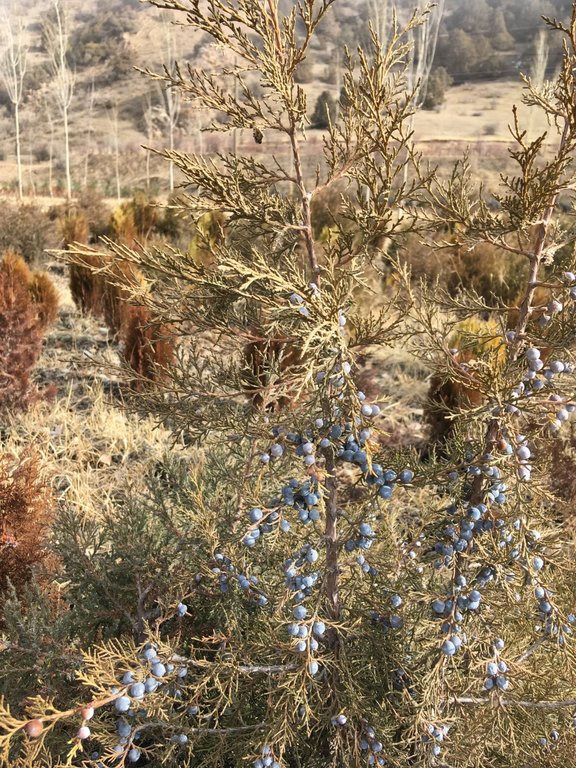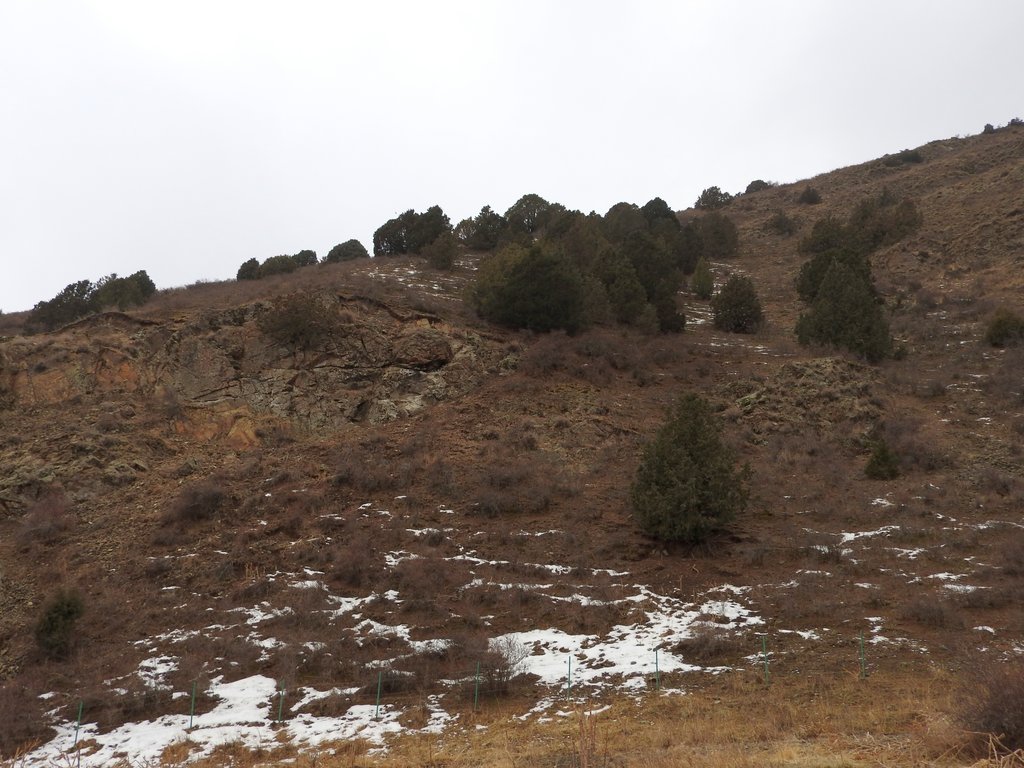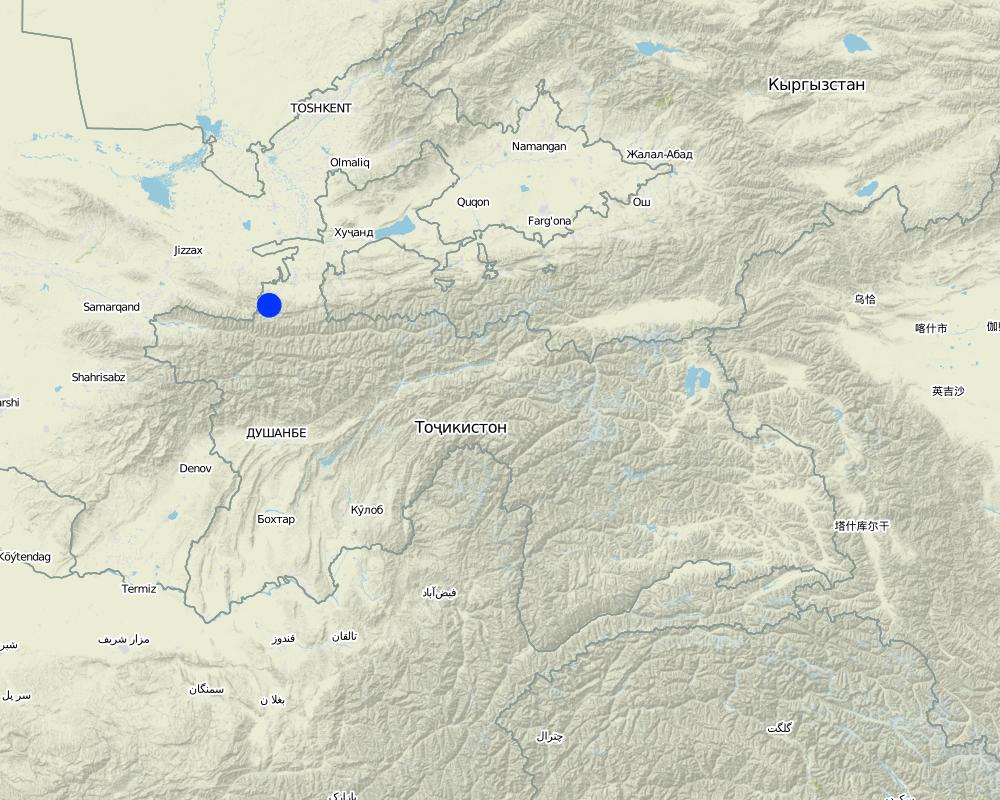Cultivation of local juniper species for rehabilitation of degrading woodland pastures [塔吉克斯坦]
- 创建:
- 更新:
- 编制者: Stefan Michel
- 编辑者: –
- 审查者: Umed Vahobov
Выращивание саженцев арчы для восстановления деградирующего редколесья горных пастбищ.
technologies_4295 - 塔吉克斯坦
查看章节
全部展开 全部收起1. 一般信息
1.2 参与该技术评估和文件编制的资源人员和机构的联系方式
关键资源人
土地使用者:
Shodiev Fakhriddin
Shahriston Forestry Enterprise
塔吉克斯坦
有助于对技术进行记录/评估的项目名称(如相关)
Strengthening of Livelihoods through Climate Change Adaptation in Kyrgyzstan and Tajikistan有助于对技术进行记录/评估的机构名称(如相关)
GIZ Tajikistan (GIZ Tajikistan) - 塔吉克斯坦1.3 关于使用通过WOCAT记录的数据的条件
编制者和关键资源人员接受有关使用通过WOCAT记录数据的条件。:
是
1.4 所述技术的可持续性声明
这里所描述的技术在土地退化方面是否存在问题,导致无法被认为是一种可持续的土地管理技术?:
否
1.5 参考关于SLM方法(使用WOCAT记录的SLM方法)的调查问卷
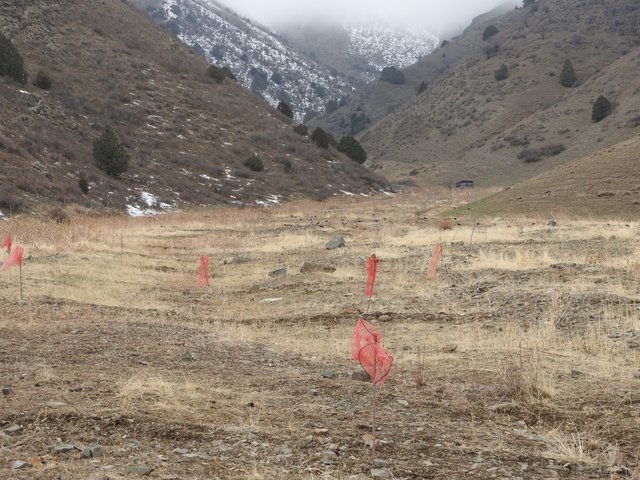
Disaster risk reduction and sustainable land-use by integrated … [塔吉克斯坦]
A site affected by a debris flow was rehabilitated by joint communal work and integrated preventive measures addressing the upper catchment as well as the valley and the debris conus were implemented in collaboration of community, individual farmers, Committee of Emergency Situations and forestry enterprise.
- 编制者: Stefan Michel
2. SLM技术的说明
2.1 技术简介
技术定义:
The local species of juniper trees (Juniperus seravschanica, Juniperus turkestanica and Juniperus semiglobosa) are rarely rejuvenating under conditions of intensive grazing and are difficult to propagate in nurseries. The technology describes the propagation of these important trees from locally collected seeds and their cultivation.
2.2 技术的详细说明
说明:
The technology is used to produce seedlings of juniper trees in the forestry nursery for further replanting in the natural juniper woodlands of the local forestry enterprise. Juniper woodlands are important ecosystems of the mountains of Central Asia, which are typically used for livestock grazing. The tree cover fulfills important functions for the maintenance of ecosystem services – local microclimate, regulation of water infiltration and surface runoff, biodiversity, esthetic value and recreation, fuelwood etc. The local juniper species rarely rejuvenate naturally. Factors hampering natural rejuvenation include intensive grazing, competition by other plant species and weather conditions. Loss of old juniper trees due to natural losses, damage and cutting combined with lacking rejuvenation causes the degradation and loss of juniper stands. Forestry enterprises in Central Asia often in such situations instead of the difficult to cultivate and slowly growing native juniper often plant non-native arborvitae Thuja spec. These non-native species do not provide the natural ecosystem functions of native juniper and are less adapted to the local site conditions.
The purpose of the described technology is therefore the provision of planting material for the rehabilitation of degraded juniper woodland pastures with native trees.
Forestry workers collect ripe juniper fruits from their natural stands during late fall (November – December). The fruits are than mixed with sand and stored in a cold place until spring, or they are further processed to accelerate germination.
In the first case in spring the fruits are crushed on a clean concrete surface either by trampling with boots or by using a vehicle. Afterwards the crushed fruits are washed and air-dried. With the help of wind and a sieve the dried seeds are cleaned from other parts of the fruits. The seeds are then stored under a 5 cm layer of sand until fall and sown in fall (October-November)
In the second case the fruits are initially for one month stored in a barrel with water. Then the fruits are crushed and cleaned as described above. The cleaned seeding material will be stored in a pit, covered with moist sand mixed with some dung from horses or cattle. After one month the seeds are sown into the nursery.
In the area of the forestry enterprise brown bears feed on juniper fruits. In the bear feces many juniper seeds can be found, sometimes directly germinating. This “natural stratification” is sometimes used by forestry workers if they find substantial amounts of bear feces consisting of juniper fruits.
The seeds are sown directly into the soil in the nursery. Each, germination rate and survival are 90%. After five years the seedlings have grown to a height of about 20-30 cm, their roots reach 20 cm deep into the soil and they are ready for replanting.
The seedlings are carefully dug out, deep enough not to damage the root system and together with the earth covering the roots. They are wrapped in plastic bags for keeping the earth cover of the roots during transportation. During the planting the seedlings are put into the tree pits together with the soil from the nursery still covering the root system. The planted seedlings are watered.
After planting the seedlings are five years cared for, including weeding and if necessary watering either from a canal, if available, or with barrels.
The use of containers for seeding and replanting has not yet been tried. It may protect the root system during replanting and reduce the amount of soil to be used for this purpose. On the other hand the technology without containers is not dependent on their availability, no garbage in form of plastic containers is left in the tree pits and the larger amount of soil from the nursery may ease establishment of the seedlings at the woodland rehabilitation site.
2.3 技术照片
2.5 已应用该技术的、本评估所涵盖的国家/地区/地点
国家:
塔吉克斯坦
区域/州/省:
Sughd
有关地点的进一步说明:
Shahriston district; Shahriston Forestry Enterprise
具体说明该技术的分布:
- 适用于特定场所/集中在较小区域
技术现场是否位于永久保护区?:
否
注释:
The approximate locatoion of the nursery is indicated. The planting of produced seedlings takes place in different areas.
Map
×2.6 实施日期
如果不知道确切的年份,请说明大概的日期:
- 10-50年前
2.7 技术介绍
详细说明该技术是如何引入的:
- 通过土地使用者的创新
注释(项目类型等):
The technology is implemented by Shahriston Forestry Enterprises since several decades.
3. SLM技术的分类
3.1 该技术的主要目的
- 减少、预防、恢复土地退化
- 保护生态系统
- 保持/提高生物多样性
- 适应气候变化/极端天气及其影响
- 创造有益的社会影响
3.2 应用该技术的当前土地利用类型
同一土地单元内混合使用的土地::
是
具体说明混合土地使用(作物/放牧/树木):
- 林牧业

牧场
粗放式放牧:
- 半游牧畜牧业
- 季节性迁移的放牧主义
动物类型:
- 牛 - 奶制品
- 牛 - 非奶牛牛肉
- 山羊
- 马
- 绵羊
产品和服务:
- 肉类

森林/林地
- (半天然)天然森林/林地
(半天然)天然森林/林地:具体说明管理类型:
- 清除枯木/剪枝
- 非木材森林的利用
(半)天然林类型:
- 温带山地系统天然植被
以上的树木是落叶树还是常绿树?:
- 混合落叶或常绿
产品和服务:
- 薪材
- 其它森林产品
- 放牧/啃牧
- 自然保持/保护
- 娱乐/旅游
- 自然灾害防护
3.3 由于技术的实施,土地使用是否发生了变化?
由于技术的实施,土地使用是否发生了变化?:
- 否(继续问题3.4)
3.5 该技术所属的SLM组
- 天然和半天然森林管理
- 畜牧业和牧场管理
3.6 包含该技术的可持续土地管理措施

植物措施
- V1:乔木和灌木覆盖层

管理措施
3.7 该技术强调的主要土地退化类型

土壤水蚀

生物性退化
- Bc:植被覆盖的减少
- Bh:栖息地丧失
- Bq:数量/生物量减少
- Bs:质量和物种组成/多样性的下降
3.8 防止、减少或恢复土地退化
具体数量名该技术与土地退化有关的目标:
- 防止土地退化
- 减少土地退化
4. 技术规范、实施活动、投入和成本
4.3 技术建立活动
| 活动 | 时间(季度) | |
|---|---|---|
| 1. | Collection of fruits from natural juniper stands | November-December |
| 2. | Stratification, cleaning of seeds | Winter - spring |
| 3. | Seeding | Winter or October-November |
| 4. | Replanting | Fall, five years after seeding |
| 5. | Watering, weeding | Each summer, up to five years |
注释:
Watering not always needed and/or possible. Often only once watered during first summer after replanting.
4.4 技术建立所需要的费用和投入
注释:
The technology is implemented in the frame of the regular activities of the state forestry enterprise. No calculation of costs was available during the time of the documentation.
4.5 维护/经常性活动
注释:
All maintenance activities (weeding, watering) are above indicated as establishment activities. After the planted juniper are established no further maintenance is required.
5. 自然和人文环境
5.1 气候
年降雨量
- < 250毫米
- 251-500毫米
- 501-750毫米
- 751-1,000毫米
- 1,001-1,500毫米
- 1,501-2,000毫米
- 2,001-3,000毫米
- 3,001-4,000毫米
- > 4,000毫米
有关降雨的规范/注释:
Rainfall is highly variable depending on altitude and aspect.
注明所考虑的参考气象站名称:
Shahriston (https://en.climate-data.org/asia/tajikistan/sughd-province/shahriston-28044/)
农业气候带
- 半湿润
- 半干旱
Climate depends in altitude and aspect. At higher elevation and northern (eastern and western) aspect climate tends towards subhumid.
5.2 地形
平均坡度:
- 水平(0-2%)
- 缓降(3-5%)
- 平缓(6-10%)
- 滚坡(11-15%)
- 崎岖(16-30%)
- 陡峭(31-60%)
- 非常陡峭(>60%)
地形:
- 高原/平原
- 山脊
- 山坡
- 山地斜坡
- 麓坡
- 谷底
垂直分布带:
- 0-100 m a.s.l.
- 101-500 m a.s.l.
- 501-1,000 m a.s.l.
- 1,001-1,500 m a.s.l.
- 1,501-2,000 m a.s.l.
- 2,001-2,500 m a.s.l.
- 2,501-3,000 m a.s.l.
- 3,001-4,000 m a.s.l.
- > 4,000 m a.s.l.
说明该技术是否专门应用于:
- 不相关
关于地形的注释和进一步规范:
Nursery at terrace of valley, woodlands at mountain slopes of varying steepness and altitudinal zones.
5.3 土壤
平均土层深度:
- 非常浅(0-20厘米)
- 浅(21-50厘米)
- 中等深度(51-80厘米)
- 深(81-120厘米)
- 非常深(> 120厘米)
土壤质地(表土):
- 粗粒/轻(砂质)
- 中粒(壤土、粉土)
表土有机质:
- 高(>3%)
- 中(1-3%)
如有可能,附上完整的土壤描述或具体说明可用的信息,例如土壤类型、土壤酸碱度、阳离子交换能力、氮、盐度等。:
Soil at nursery site may differ from conditions at the actual woodlands. Soil conditions in juniper woodlands can be very diverse.
5.4 水资源可用性和质量
地下水位表:
5-50米
地表水的可用性:
中等
水的盐度有问题吗?:
否
该区域正在发生洪水吗?:
否
关于水质和水量的注释和进一步规范:
Juniper typically grows in areas without ground water influence, but locally and where deforestation has not impacted the stands too much, juniper can also grow in riparian areas outside of the immediate influence of the river and subsoil water.
5.5 生物多样性
物种多样性:
- 中等
栖息地多样性:
- 中等
关于生物多样性的注释和进一步规范:
Biodiversity in juniper woodlands varies depending on the specific type of vegetation and use intensity.
5.6 应用该技术的土地使用者的特征
说明土地使用者的其他有关特征:
The land-user applying the technology is the state forestry enterprise.
5.7 应用该技术的土地使用者使用的平均土地面积
- < 0.5 公顷
- 0.5-1 公顷
- 1-2 公顷
- 2-5公顷
- 5-15公顷
- 15-50公顷
- 50-100公顷
- 100-500公顷
- 500-1,000公顷
- 1,000-10,000公顷
- > 10,000公顷
这被认为是小规模、中规模还是大规模的(参照当地实际情况)?:
- 小规模的
注释:
Nursery is only few hectares. Woodland rehabilitation takes place in areas of several ten hectares each. The overall area belonging to the land use (forestry enterprise) is >10,000 ha.
5.8 土地所有权、土地使用权和水使用权
土地所有权:
- 州
土地使用权:
- 租赁
土地使用权是否基于传统的法律制度?:
否
注释:
The forestry enterprise issues permits for seasonal use of juniper woodlands for livestock grazing by associations or individual livestock herders.
5.9 进入服务和基础设施的通道
注释:
Not relevant for this technology.
6. 影响和结论性说明
6.1 该技术的现场影响
社会经济效应
水资源可用性和质量
灌溉用水的可用性
社会文化影响
娱乐机会
生态影响
水循环/径流
水量
水的回收/收集
地表径流
蒸发
土壤
土壤水分
土壤覆盖层
土壤流失
土壤有机物/地下C
生物多样性:植被、动物
植被覆盖
生物量/地上C
植物多样性
动物多样性
栖息地多样性
减少气候和灾害风险
滑坡/泥石流
微气候
对现场影响的评估(测量)进行具体说明:
There are no scientific assessments of on-site impacts available. The assesment here represents a rough guess of impact of juniper woodland rehabilitation in moderately degraded pasture areas.
6.2 该技术的场外影响已经显现
水资源可用性
旱季稳定可靠的水流
下游洪水
下游淤积
对邻近农田的破坏
对公共/私人基础设施的破坏
对场外影响(测量)的评估进行具体说明:
There are no scientific assessments of on-site impacts available. The assesment here represents a rough guess of impact of juniper woodland rehabilitation in moderately degraded pasture areas.
6.3 技术对渐变气候以及与气候相关的极端情况/灾害的暴露和敏感性(土地使用者认为的极端情况/灾害)
渐变气候
渐变气候
| 季节 | 增加或减少 | 该技术是如何应对的? | |
|---|---|---|---|
| 年温度 | 增加 | 适度 | |
| 季节性温度 | 旱季 | 增加 | 适度 |
| 年降雨量 | 减少 | 适度 | |
| 季雨量 | 湿季/雨季 | 减少 | 适度 |
| 季雨量 | 旱季 | 减少 | 适度 |
注释:
Juniper trees grow at sites with a broad range of climate conditions, some of them rather extreme. They can therefore expected to cope with increasing aridity and short-term extremes at their natural stands. In the nursery drought can be compensated by watering, although intensive watering may hamper adaptability and survival of replanted saplings.
6.4 成本效益分析
技术收益与技术建立成本相比如何(从土地使用者的角度看)?
短期回报:
中性/平衡
长期回报:
稍微积极
技术收益与技术维护成本/经常性成本相比如何(从土地使用者的角度看)?
短期回报:
稍微积极
长期回报:
积极
注释:
Rehabilitation of juniper woodlands provides only long-term economic benefits. Costs of cultivation in nurseries are partly compensated by combined growing of decorative coniferous treees (thuja, spruce) for commercial sale.
6.5 技术采用
- 单例/实验
6.6 适应
最近是否对该技术进行了修改以适应不断变化的条件?:
否
6.7 该技术的优点/长处/机会
| 土地使用者眼中的长处/优势/机会 |
|---|
| The technology is well established for the propagation of native juniper saplings and for the rehabilitation of juniper woodlands. |
| The technology has the advantage of allowing for the establishment/rehabilitation of tree stands with native species, which are adapted to local site conditions and are an integral component of the ecosystem. |
| The area of juniper woodlands in various stages of degradation in the country makes up many ten thousands of hectares. While resources (labour, nursery capacity) are prohibitive for replanting juniper in all areas, the technology allows for rehabilitation of key areas, identified by need and/or rehabilitation potential. In particular other forestry enterprises in the country with juniper woodlands could potentially adopt the technology. |
| 编制者或其他关键资源人员认为的长处/优势/机会 |
|---|
| Same as land user's view. |
| Same as land user's view. |
| Same as land user's view. |
6.8 技术的弱点/缺点/风险及其克服方法
| 土地使用者认为的弱点/缺点/风险 | 如何克服它们? |
|---|---|
| Substantial amount of work required. | Nothing suggested. |
| Juniper grows slower than other species. | Nothing suggested. |
| None mentioned |
| 编制者或其他关键资源人员认为的弱点/缺点/风险 | 如何克服它们? |
|---|---|
| Same as land user's view. | Consider facilitation of natural rejuvenation through grazing management (temporary exclusion of sites or reduction of grazing intensity or adaptation of herd compostion - no goats). |
| Same as land user's view. | Natutral feature of the native juniper tree species, which cannot be changed, but needs to be taken into consideration during production of planting material and in the management of the woodlands. |
| Over grazing may hamper success of woodland recovery. | Support establishment of replanted saplings through grazing management (temporary exclusion of sites or reduction of grazing intensity or adaptation of herd compostion - no goats). |
7. 参考和链接
7.1 信息的方法/来源
- 实地考察、实地调查
Site visit at nursery (November 2018), many site visits in juniper woodlands of Tajikistan and adjacent countries since 1993.
- 与土地使用者的访谈
Interview with forest protection engineer of Shahriston Forestry Enterprise
- 与SLM专业人员/专家的访谈
Interview with forest protection engineer of Shahriston Forestry Enterprise, with GIZ experts Negmatjon Negmatov (agricultural expert) and Nodir Muhidinov (DRR expert).
- 根据报告和其他现有文档进行编译
(现场)数据是什么时候汇编的?:
27/11/2018
7.4 一般注释
The documentation of the technology is based on the site visit at the nursery and one single interview with the forest protection engineer of Shahriston Forestry Enterprise. It was not possible to observe the entire process of propagation, cultivation and replanting of juniper and to verify the recieved information. The compiler took into consideration additionally his ecological knowledge and expertise. Given the importance of juniper woodlands as ecosystems in Central Asia, their large-scale degradation, the difficulties of their rehabilitation and the prevalence of non-native species in reforestation projects this technology deserves documentation and further consideration.
链接和模块
全部展开 全部收起链接

Disaster risk reduction and sustainable land-use by integrated … [塔吉克斯坦]
A site affected by a debris flow was rehabilitated by joint communal work and integrated preventive measures addressing the upper catchment as well as the valley and the debris conus were implemented in collaboration of community, individual farmers, Committee of Emergency Situations and forestry enterprise.
- 编制者: Stefan Michel
模块
无模块


